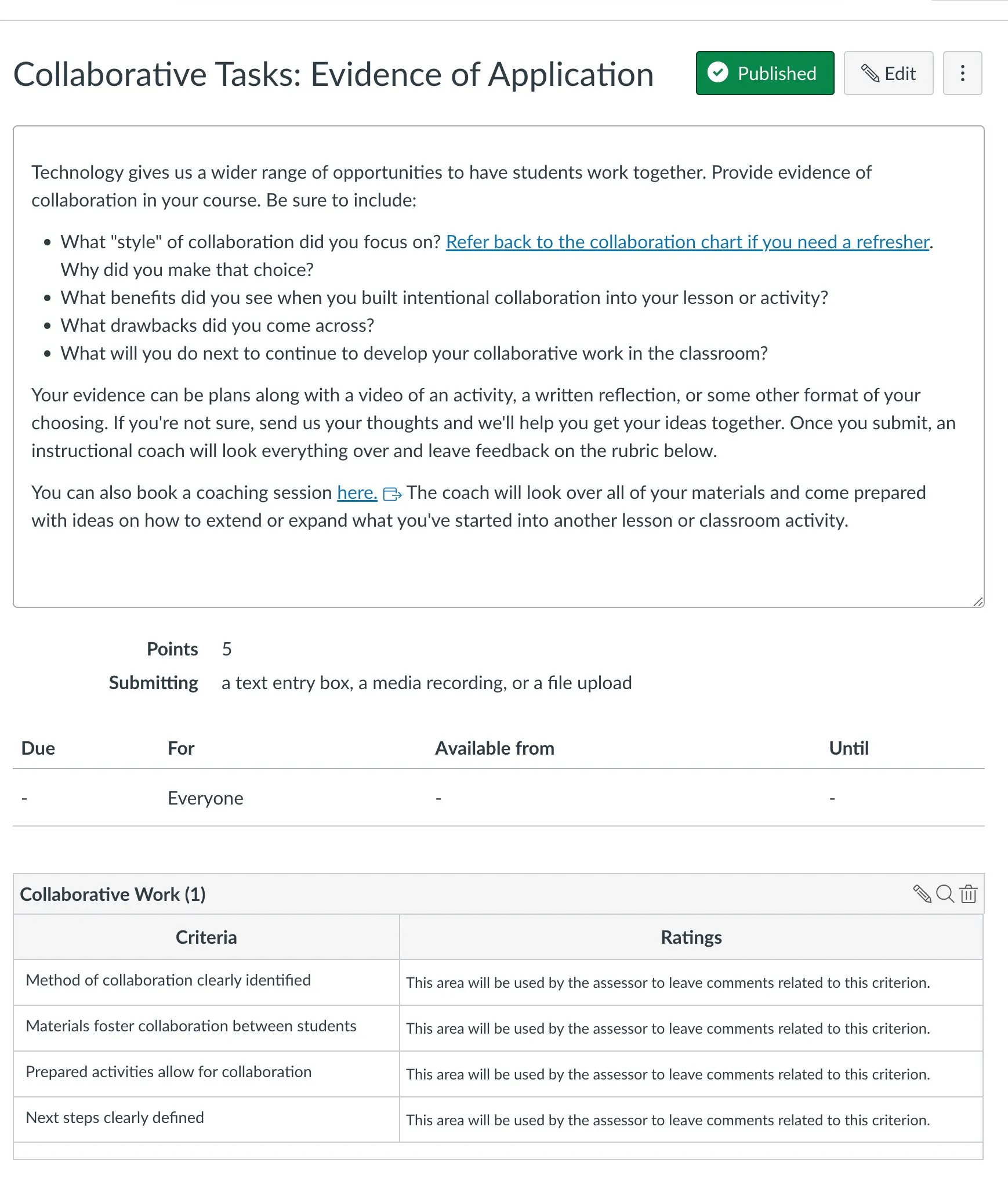Humanize the LMS with Feedback
Published: 2023-06-29 11:48 AM | Updated: 2023-07-08 9:53 PM
Category: Teaching | Tags: online teaching, online course, feedback, humanize, relationship
I've written about this on the work blog before, but never here. We're doing some course cleanup prepping for the fall and, at the same time, I'm finishing a graduate course on online learning, which is making me think much more deeply about how we build and implement courses for staff.
This week, we explored Michelle Pacansky-Brock's research into "humanizing" online education, in particular because of the spectrum of online learning that was done during (and post-) COVID. Online learning was around before COVID put a lot of people into the space for the first time, but the interest in how to make online learning more engaging and more relational has increased.
Most of our PD courses are hybrid - staff see a coach several times while completing a program - but there is a large portion we house in Canvas. We rely on the LMS to hold information organized into topics or ideas that participants explore over a period of time.

In each module, a participant has to submit evidence of application. In the past, this would trigger a visit with a coach to discuss their submission. But, what if this was a fully online program with no coach visit? How can we give participants timely, actionable feedback on their instruction without actually visiting their classroom?
I decided to focus on her concept of "warm, wise feedback" by adding some single-point rubrics to each of our evidence submission items to guide our participants' thinking and provde feedback which can humanize the online course.
The idea of a single-point rubric is simple: students receive feedback on what they did well to show their understanding or what they need to improve in order to demonstrate growth. The rubric does not have points attached - just a comment box. It provides a way for the coach to give targeted feedback on the core components of the task. The participant has a mental model for the kind of work they should exhibit by completing the task and they know they'll receive feedback on key components of the skill being explored.

Attaching these rubrics to the evidence submission page communicates what the participant should be able to do as a result of completing the module. Including the rubric gives them a chance to reflect on their work and pick the best evidence for the skill to share with the coach. The coach is then equipped to work with the teacher in specific, targeted ways to continue to improve.
I don't love that Canvas (or any LMS) still uses "judgy" language in the rubric - "Ratings" instead of "Feedback" - but by removing points or other indicators of "passing" or "failing," we're able to focus on the process of improvement.
While this is geared for adult learners, the same can easily be done for students. On your content standards, consider adding places for students to creatively demonstrate understanding, maybe with a choice board or open-ended response items. Using single-point rubrics to humanize the learning space reinforces that learning is a process and we go through the process together.
Resources
Gonzalez, J. (2015, Feb. 4). Meet the single point rubric. Cult of Pedagogy. https://www.cultofpedagogy.com/single-point-rubric/.
Pacansky-Brock, M. (2020). How to humanize your online class, version 2.0 [Infographic]. https://brocansky.com/humanizing/infographic2

Comments